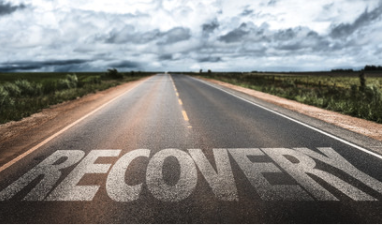WASHINGTON, DC— The world is at war against COVID-19, not just a public health battle but an economic war for the ages. Like the great wars of the 20th century, the fight against COVID has seen governments, particularly those in the developed economies, turn to their ammunition of choice – debt. Striving to stabilize economies, governments have incurred mountains of debt in just a matter of months. The way in which the debt is paid off could have a long-lasting effect on our economies and the global order. In such a tumultuous time, we cannot predict the exact fate of the world economy.
However, we can turn to major economic crises of the past to determine the likely impacts of COVID-19 as we move forward. The world’s economic recovery from COVID-19, no matter when it comes, will ultimately be defined by three things: recuperation from debt, resiliency of developed vs developing markets, and the pandemic’s impact on the world order. In the current COVID-19 pandemic, the world faces staggering economic costs. Worse still, we are only in the initial phase of battling the disease. Advanced economies will run an average deficit of 11% of GDP. By the end of the year, the public debt of the developed world will reach $66 trillion. Governments are frantically injecting liquidity into central banks and over a hundred of the world’s 195 countries have already applied for aid from the International Monetary Fund.
Many have been ringing the warning bell as government debt is mounting up. History, however, has shown that debt may not be the antagonistic force many people believe. The key to pulling off a debt-fueled recovery lies in policy implementation. Economic growth has been proven in the past to effectively combat debt. In order to do this, governments must keep their combined real economic growth and inflation above the interest rate for servicing the debt, allowing the debt-to-GDP ratio to shrink over time. Such economic growth out of financial disaster is much more likely than one might think. As Olivier Blanchard, Senior Fellow at the Peterson Institute for International Economics, notes, “Nominal growth rates higher than interest rates have in fact proved to be the historic norm. Put bluntly, public debt may have no fiscal cost… The probability that the U.S. government can do a debt rollover, that it can issue debt and achieve a decreasing debt to GDP ratio without ever having to raise taxes later, is high.’’ Emerging from the smoldering ruins of World War II, a number of advanced economies pursued debt-driven economic growth with great success. America managed to decrease its debt-to-GDP ratio by a staggering 86% in the decades after the war. The success of economic growth after crises in the past proves the developed world’s resiliency from debt. Rather than shying away from piles of debt, we should instead take on as much as required to guarantee both stabilizing and stimulus funding for the economy. By protecting the country from deeper economic scars in the short run, we can enable innovation to drive growth and rescue us in the future, especially in market based economies. However, COVID-19’s economic impact will not be experienced by all countries equally. The pandemic is wreaking havoc on the public finances of emerging market economies especially. Like in past crises, foreign investors are not willing to invest in or lend to these countries for fear of their economies not being resilient enough to make an economic comeback.
Since January, these investors have withdrawn over $100 billion from emerging-market bonds and shares. This staggering flight of capital means investors have pulled out over three times what they did over an equivalent period during the 2008-09 financial crisis. The credit that emerging economies are able to access now comes at high interest rates to compensate for the increased risk. In order to prop up their falling economies, emerging markets have taken out the most government debt, now exceeding 24% of the global total. Many of them have had their credit ratings cut in the past year and several have defaulted on their debt. The only way to overcome debt through growth is when nominal economic growth surpasses the interest rate on the debt, and this has become quite impossible for emerging markets. Emerging markets will sustain deep and irrevocable damage. Susan Rice, former U.S. National Security Advisor and U.S. Ambassador to the United Nations, predicts that developing markets will “be in an even deeper hole than before.” The economic carnage will include deficits from locking down populations, damaged export earnings (especially for oil exporters), and diminished access to foreign capital. Unfortunately, developing countries will take much longer to recover from the impacts of this pandemic and most likely will remain in chronic economic condition in years to come. COVID-19 has disrupted markets, shattered lives, and laid bare the competence—or lack thereof—of governments.
But will it also lead to shifts in the political and economic power structure globally? When looking to global leaders such as the U.S., China, and Europe, signs indicate there won’t be a clear winner. Some experts portend a massive shift in the world order. The lack of U.S. leadership on battling the COVID-19 pandemic could imply an accelerated decline of America’s position in the global order. But the likelihood and strength of the economic recovery ahead is a key factor of determining geopolitical influence. The U.S. will likely see innovation driving continued growth of the technology and services sectors and strong capital investment inflows due to the unique position of the dollar as the de facto global currency. Even with diminished engagement in multilateral organizations like the United Nations, World Bank and International Monetary Fund, America’s place in the global order is not likely to change materially given these structural advantages that have been built over decades. Others believe that China, fresh from a speedy COVID recovery, economy mostly unscathed, and ready to assist countries in need, may be poised to take advantage of the potential leadership vacuum left by the U.S. However trust is an inextricable component of determining the world order, and right now China is sorely lacking in it. Foreign leaders overwhelmingly blame China for their lack of transparency and action early on in the course of the virus. Currently, a broadening international effort is ongoing to discuss punitive measures against China. However, China continues to have a dominant influence in certain regions, including in Africa where it seeks to access natural resources and Southeast Asia where it serves as the main regional trade and investment partner. While its non-transparency may cost China in the short term, its economic and political power in the long term will remain largely unchanged and enable it to make a case for global leadership. The European Union, on the other hand, is likely to have a mixed economic recovery among its member states, leading to a weakening of its geo-political influence. Even before COVID hit, one of its leading members – the U.K. – had exited from the EU and the club-med southern members, including Italy, Spain and Greece, were limping back from the 2008-09 financial crisis. Larry Summers, former U.S. Secretary of the Treasury, points out that countries such as Spain and Italy have been now dealt a death blow with aging populations succumbing to the disease in the millions. The bigger European economies led by Germany and France will need to disproportionately carry the economic burden of the EU’s recovery from the pandemic. The political and economic tensions among EU member states will inevitably heighten. Ultimately, the European Union’s geopolitical power may take a hard hit from the impacts of COVID-19 and it may be more beholden to the U.S. and China. It is clear that the world will take on more debt to recover from COVID-19.
The question is how countries will deal with it. Some developed economies like the U.S. and China will likely manage the tricky balancing act of managing debt while driving growth and will emerge relatively unscathed. Others starved of economic oxygen, including emerging markets, may remain on ventilators for years to come. Yet others, such as the EU, will likely have a diminished role on the global stage as they limp out from the crisis. But if countries unite in their response to COVID-19, there is a better and more equitable outcome that can be secured. Henry Kissinger, former U.S. Secretary of State, asserts that the path forward from COVID requires a coordinated international effort, both in respect of public health and economic recovery. In the long term, we must shore up global resilience to crisis and strive to heal wounds to the world economy together. This is not a time for geo-political rivalry and blame; it is a time for strength and unity. The historic challenge of the post-COVID era is for world leaders to achieve a recovery that restores economic security while ensuring public health and human dignity.








Very thought-provoking. We can hope the global community will work together to ensure the health of the global economy, but this remains to be seen. Every time period has its own unique context and ours is one of globalization, income disparity, and climate change to name three factors that will impact how we as a planet overcome COVID. Great article!
Like!! Really appreciate you sharing this blog post.Really thank you! Keep writing.